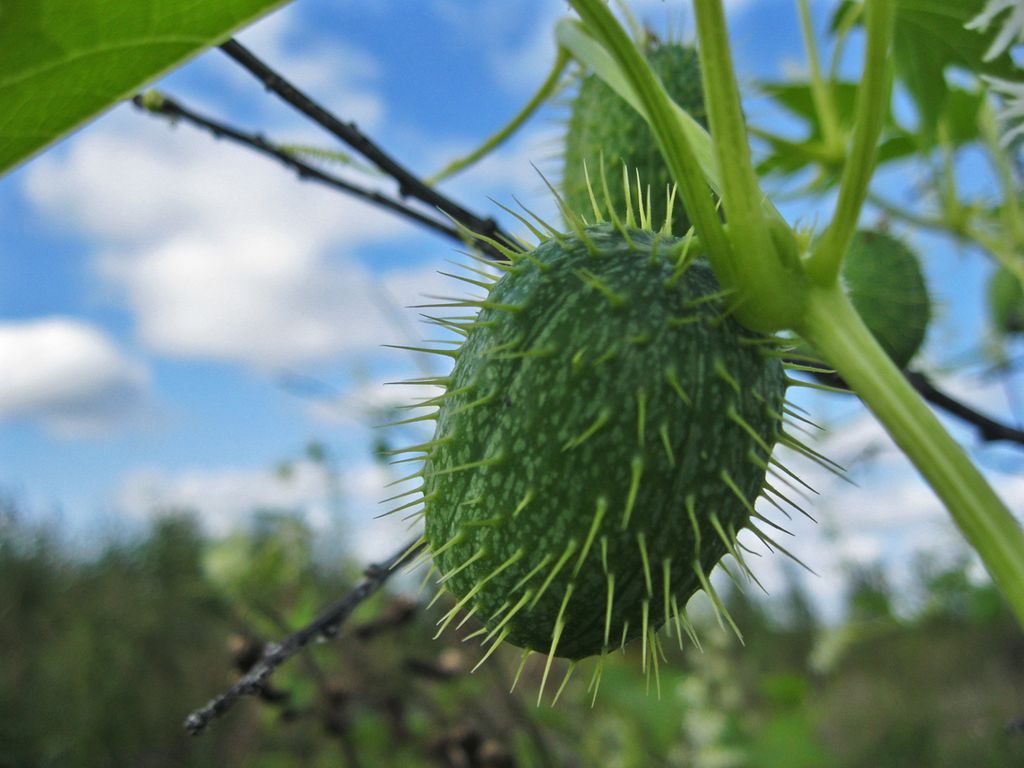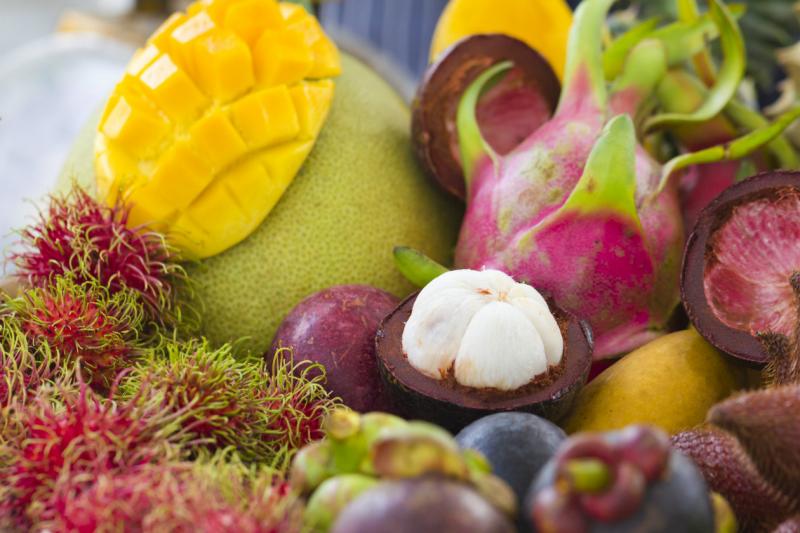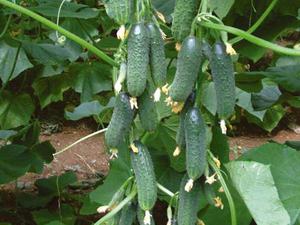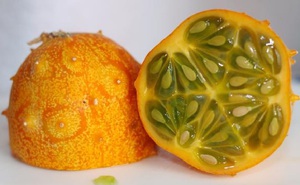 Kiwano is an exotic fruit of African origin that has now become very popular. In another way, it is also called African cucumber or horned melon, since on the surface of this oval-shaped fruit there are thorns in the form of horns. Kiwano is a herbaceous vine of the pumpkin family, the subspecies is a cucumber. Its peel is yellow-orange in color, and the pulp is jelly-like with a tart taste. Such an unusual appearance and shape does not allow it to be confused with any other exotic fruit.
Kiwano is an exotic fruit of African origin that has now become very popular. In another way, it is also called African cucumber or horned melon, since on the surface of this oval-shaped fruit there are thorns in the form of horns. Kiwano is a herbaceous vine of the pumpkin family, the subspecies is a cucumber. Its peel is yellow-orange in color, and the pulp is jelly-like with a tart taste. Such an unusual appearance and shape does not allow it to be confused with any other exotic fruit.
Kiwano benefits
This fruit has a universal composition... It contains water, carbohydrates, proteins, fats, and ash in varying amounts. In addition, this fruit is rich in vitamins A, B, C, as well as macro- and microelements (iron, calcium, zinc, potassium, magnesium, manganese). Kiwano is considered a low-calorie product, therefore it is used for dietary nutrition.
What else is this fruit useful for?
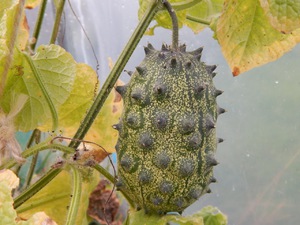 Such a fruit fully provides the human body with nutrients that are extremely necessary in winter. If you regularly include it in your diet, then you can quickly strengthen your immunity.
Such a fruit fully provides the human body with nutrients that are extremely necessary in winter. If you regularly include it in your diet, then you can quickly strengthen your immunity.- Due to the fact that the pulp contains a large amount of water, its balance in the body is maintained at the proper level. The high potassium content tones the muscles and influences the heart in the best way.
- Although this horned melon tastes very sweet, it can be consumed by people with diabetes. It is even recommended to include it in the diet for patients. Since this cucumber is low in calories, it can be consumed by dieters.
- People suffering from diseases of the digestive tract should consume Kiwano juice. The fiber contained in the fruit is remarkably absorbed, promotes the stimulation of intestinal motility and removes toxic and harmful substances from the body.
Technology of growing Kiwano from seeds
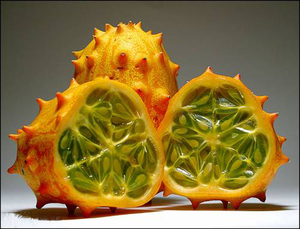 There are many ways to grow this exotic cucumber. Many people prefer to use seeds for this, which sown one month before planting to a permanent place at the end of April - beginning of May. One day before sowing, they are soaked in containers with a prepared solution of sodium humate or epin-extra.
There are many ways to grow this exotic cucumber. Many people prefer to use seeds for this, which sown one month before planting to a permanent place at the end of April - beginning of May. One day before sowing, they are soaked in containers with a prepared solution of sodium humate or epin-extra.
As soon as the seeds are swollen, they are placed in a pot or other container with a diameter of at least 8 - 10 cm, filled with a nutritious soil mixture. Before planting them outdoors, it is best to keep the seeds in a greenhouse for two weeks. Seedlings are transplanted into the beds after the soil is no longer frosty.
It is necessary to plant a kiwano in two or three rows, which should be at least 40 cm apart from each other. The same value should be applied for seedlings.
When transplanting a plant to open ground, you should choose a place that will protect the seedlings well from wind and direct sunlight. Although this exotic cucumber is considered to be thermophilic, it can't stand the hot sun... Burns quickly develop on the leaves, and the ovary and flowers may fall off.
Kiwano loves loose, light and permeable soil. Drought and excessive moisture are detrimental to him. Its stems are tied to uprights and, as they grow, must be twisted.
In order not to ruin the seedlings, as well as to obtain beautiful fruits, you should adhere to the basic rules for caring for an African cucumber.
Care
Weeding and watering
The soil around the plant must be constantly loosened, weed out and carried out regular watering 2 - 3 times a week.
Top dressing
This cucumber is very fond of feeding, which must be carried out regularly, using a mullein or an infusion of herbs diluted with water or chicken droppings. Be sure to alternate organic fertilizing with mineral fertilizers, using complex mineral fertilizers. Foliar dressings with various microelements are also useful.
Topping
With strong thickening, it is necessary to pinch the lateral shoots on the ovary, and the barren flowers are cut out completely. The formed young ovaries are removed in a day or two, and this must be done as early as possible, so that new fruits grow faster. At the end of the growing season, all the fruits are harvested, and the kiwano is placed in compost.
How is this fruit eaten?
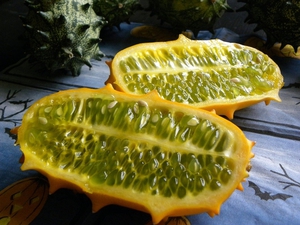 In what form can this exotic cucumber be consumed? To get the most out of it, eating the fruit is necessary as soon as it has been picked... In this case, it retains the PP vitamins and ascorbic acid, which have the most beneficial effect on the immune system.
In what form can this exotic cucumber be consumed? To get the most out of it, eating the fruit is necessary as soon as it has been picked... In this case, it retains the PP vitamins and ascorbic acid, which have the most beneficial effect on the immune system.
Kiwano gives an original taste to jam and compotes. The dense green flesh is used for salads and desserts. You can decorate with peeled slices:
- cocktails;
- second courses;
- sandwiches.
Many people prefer to use exotic cucumber peel, since it contains a lot of elements such as:
- vitamin B;
- cellulose.
In modern cooking, the fruits are used to prepare a variety of dishes, and if the fruit is eaten raw, then all the seeds should be thrown away, and all the pulp should be selected with a spoon. Eating horned melon did not harm anyone. However, for people prone to allergic reactions, for the first time this fruit must be eaten with care, best in small pieces.
Thus, the cultivation of such an exotic fruit from seeds in our country is within the power of everyone. Taking proper care of it will ensure an excellent harvest. Kiwano will not only enrich the diet, make dishes aromatic and unusual, but also, due to the large amount of nutrients, will well strengthen the immune system.
